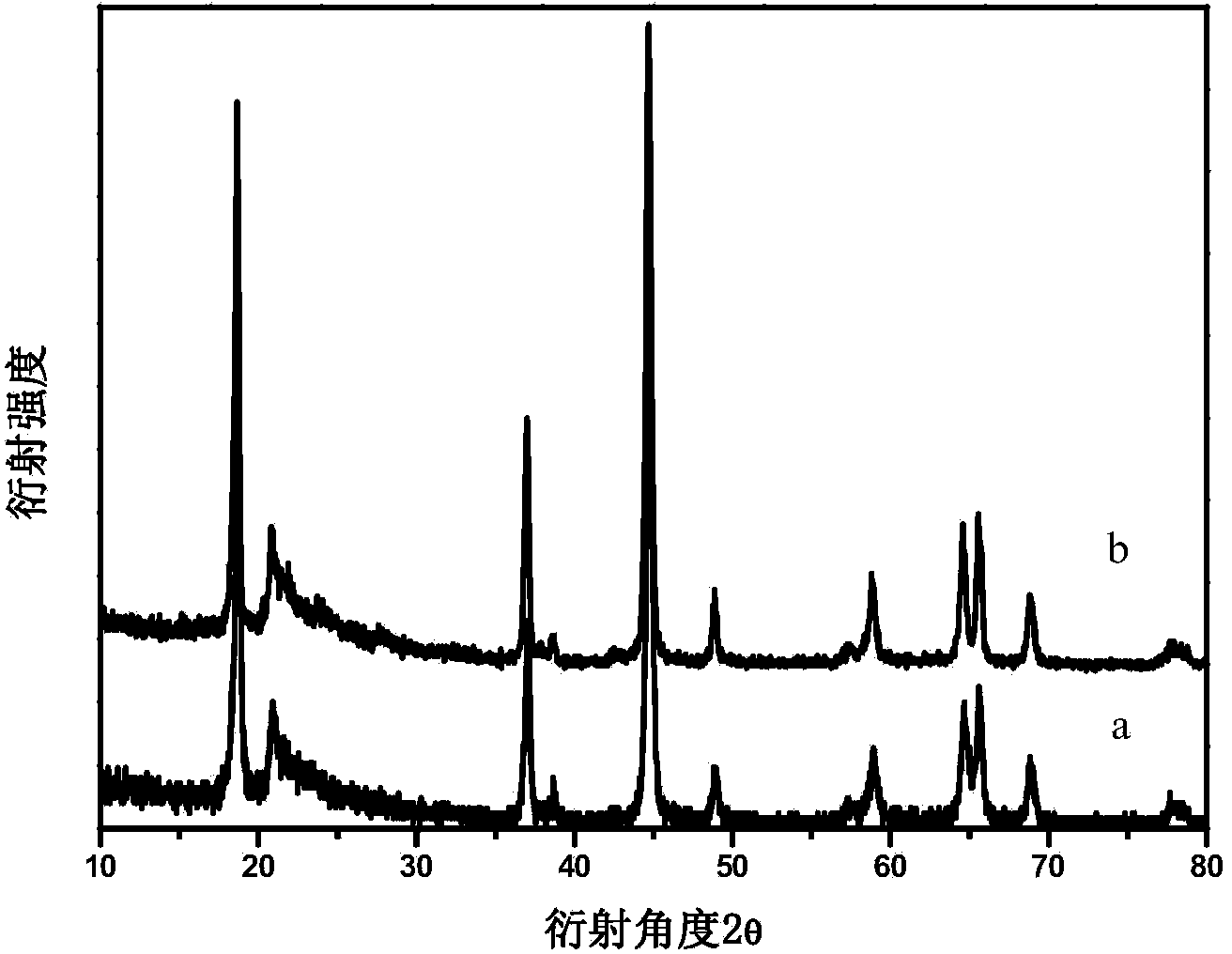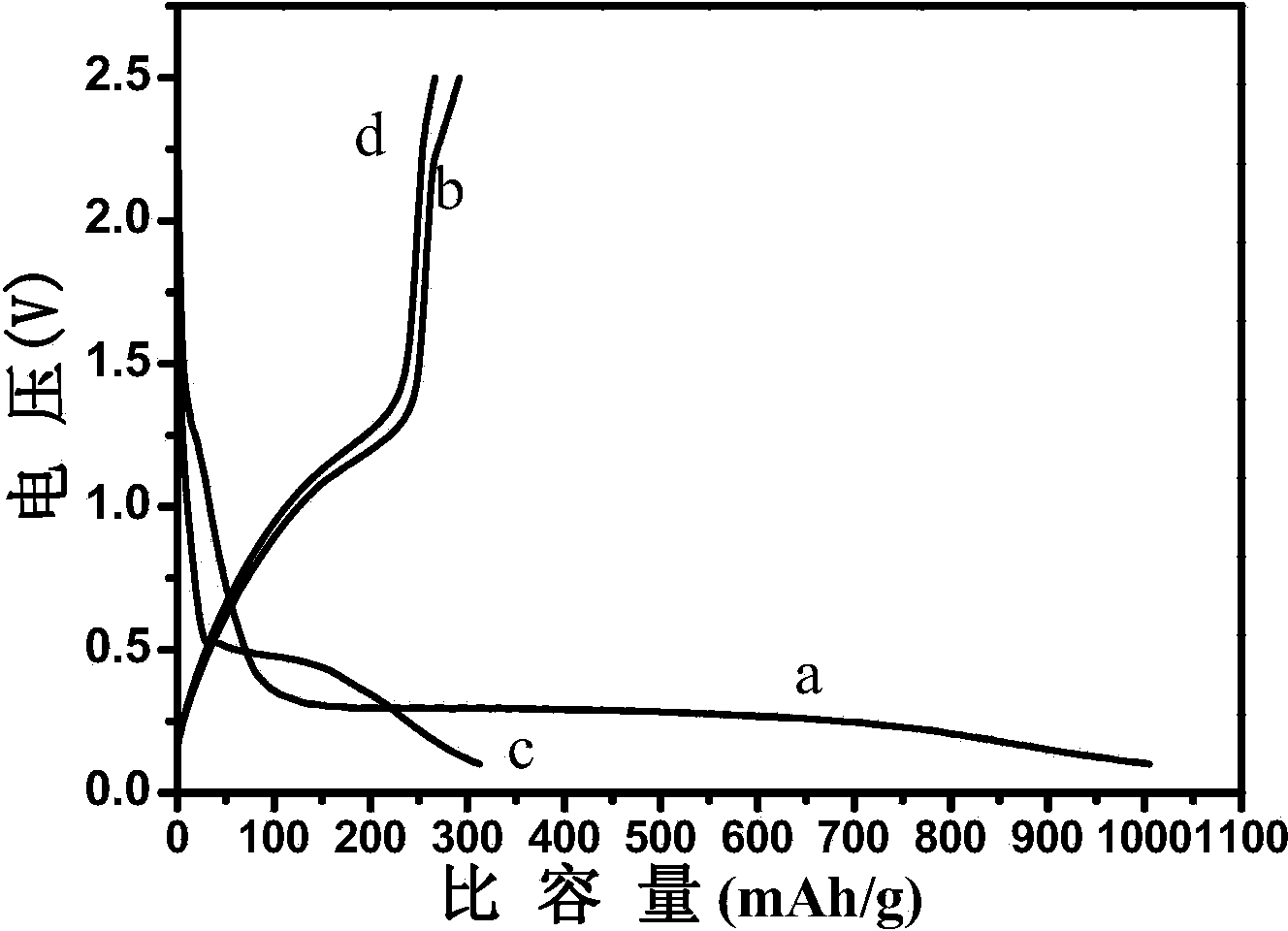High-temperature solid-phase preparation method of lithium ion battery negative electrode material
A lithium-ion battery, material lithium manganate technology, applied in the direction of battery electrodes, manganate/permanganate, secondary batteries, etc., can solve the problem of theoretical capacity limit development, etc., to achieve rich sources of raw materials, simple and easy process row, the effect of small grain size
- Summary
- Abstract
- Description
- Claims
- Application Information
AI Technical Summary
Problems solved by technology
Method used
Image
Examples
Embodiment 1
[0034] Will Li 2 CO 3 and Mn(CH 3 COO) 2 Weigh according to the stoichiometric ratio of Li:Mn=2:1, mix evenly, use a planetary ball mill, add an appropriate amount of ethanol, just submerge the raw materials, use wet ball milling for 8 hours; then pre-heat at 300°C in an air atmosphere Processed for 5h, after natural cooling, a powdery product was obtained;
[0035] In the planetary ball mill, use the same method to ball mill again for 6 hours, dry it in an oven, manually grind it, press it into tablets, and sinter it at 750°C for 6 hours in an air atmosphere to obtain lithium manganate (Li 2 MnO 3 ) anode material.
[0036] The XRD pattern of the product is shown in figure 1 (a), as can be seen from the figure, using this high-temperature solid-state sintering method, a pure-phase monoclinic lithium manganese oxide (Li 2 MnO 3 ) anode material. There is no impurity peak in the spectrogram, and the product has high purity. When the charge and discharge voltage of the l...
Embodiment 2
[0039] LiCH 3 COO and MnCl 2 Weigh it according to the stoichiometric ratio of Li:Mn=2:1, put it into an agate mortar, and grind it manually for one hour;
[0040] Then under air atmosphere, pretreatment was carried out at 300°C for 12 hours, and after natural cooling, the powdery product was obtained
[0041] Put the above powdered product in a planetary ball mill, add ethanol that has just submerged the sample, use wet ball milling for 10 hours, dry it in an oven, manually grind it, and press it into tablets. 2 Under the atmosphere, sintering was carried out at 850°C for 6h to obtain lithium manganate (Li 2 MnO 3 ) anode material.
[0042] The XRD pattern of the product is shown in figure 1 (b), as can be seen from the figure, using this high-temperature solid-state sintering method, a pure-phase monoclinic lithium manganese oxide (Li 2 MnO 3 ) anode material. There is no impurity peak in the spectrogram, and the product has high purity. The lithium manganate (Li 2...
Embodiment 3
[0044] LiCO 3 and MnO 2 Take by weighing according to the stoichiometric ratio of Li:Mn=2:1, mix evenly, ball mill on a planetary ball mill for 12h, mix evenly;
[0045] Then under air atmosphere, pretreatment was carried out at 200°C for 8 hours, after natural cooling, the powdery product was obtained after grinding;
[0046] The above powder was sintered at 780° C. for 6 hours in an air atmosphere to obtain a lithium manganate negative electrode material.
[0047] Add acetylene black accounting for 10wt% of the mass fraction of the above-mentioned powdery product as a carbon source, ball mill again in a planetary ball mill for 10 h, and then anneal and sinter at 400 ° C for 6 h under N2 atmosphere to obtain carbon-coated lithium manganate ( Li 2 MnO 3 ) anode material.
[0048] The XRD pattern of the product is shown in Figure 7 (a), as can be seen from the figure, the pure phase monoclinic lithium manganese oxide (Li 2 MnO 3 ) negative electrode material, no impuri...
PUM
 Login to view more
Login to view more Abstract
Description
Claims
Application Information
 Login to view more
Login to view more - R&D Engineer
- R&D Manager
- IP Professional
- Industry Leading Data Capabilities
- Powerful AI technology
- Patent DNA Extraction
Browse by: Latest US Patents, China's latest patents, Technical Efficacy Thesaurus, Application Domain, Technology Topic.
© 2024 PatSnap. All rights reserved.Legal|Privacy policy|Modern Slavery Act Transparency Statement|Sitemap



